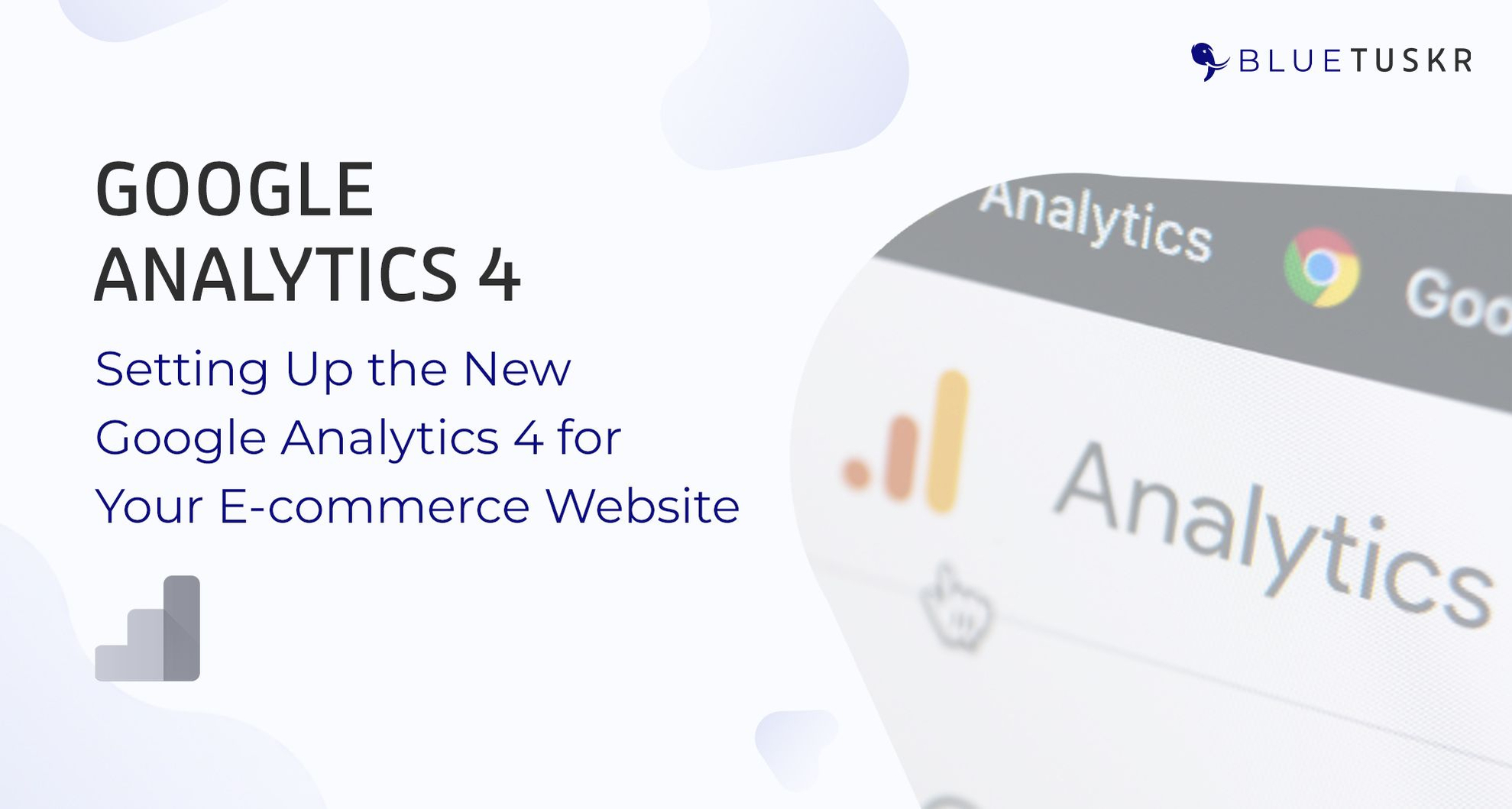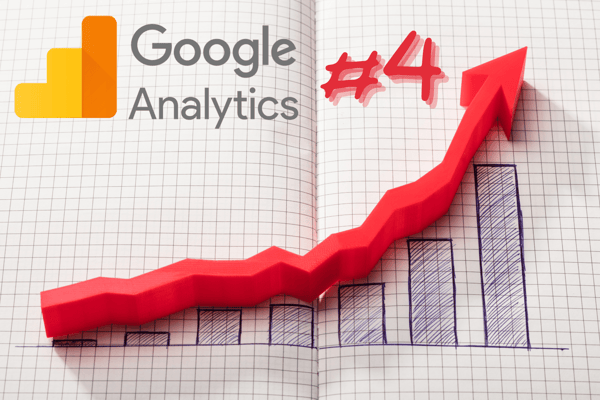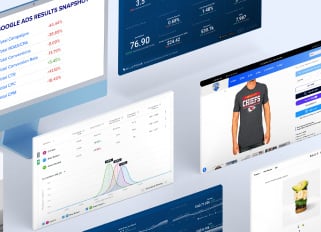
Setting Up the New Google Analytics 4 for Your E-commerce Website - Updated 2023
Nearly 13 million sites in the United States trust and use Google Analytics. Google is considered the king of many things on the Internet, and its ability to track important analytics has become one of its beloved traits over the years. For e-commerce websites in particular, Google Analytics has won the trust of many over the years.
Recently, Google upgraded its analytics to what they refer to as Google Analytics 4. This upgrade or new generation of Google Analytics works tracks both your websites and your apps.
If you're looking for better analytics and deeper insights into your e-commerce website and its audience, you should upgrade to Google Analytics 4 for e-commerce. To learn more about it, keep reading. We'll tell you everything you need to know about the upgrade, why you should get it, and how you should get it.

What Is Google Analytics 4?
Website lovers and analytics experts from around the world consider Google Analytics 4 to be the best upgrade that Google Analytics has gotten so far. With deeper analytical features and new features based in artificial intelligence and privacy, Google Analytics provides everything that the modern website wants and needs.
This is not to mention that everything that the new Google Analytics 4 provides is even better off for the visitors and customers of the websites that implement it. Google has made the shift towards customer/consumer privacy as well as company/producer transparency.
Let's dive into some of the new and improved features of Google Analytics 4.
New Insights and Predictions By Artificial Intelligence
Machine-learning isn't a new thing, but the way that Google has mastered artificial intelligence (AI) for their analytics is. They've created a system mapped around AI and its abilities that can give you the most important updates on your e-commerce website and how it's doing in relation to market trends and worldwide expectations of the e-commerce market.
For example, you might be interested in knowing what's trending on any given day. Not only can this help you determine what products and services to make available, but it can also help you know which products and services to advertise during a given period of time.
The new technology can also look at important customer analytics like churn rate. By using this information, the system can determine and make predictions about the future health of your company.
More specifically and more importantly, this can help you focus on high-value and high-return audiences. By targeting certain accounts like this, you will be able to increase your ROI (return on investment).
So, get out there and use your marketing strategies. You'll be able to see your success on the same day.
Improved Audience Integration With Google's Advertisements
With Google Analytics 4, the website owner/analytics tracker can view customer insights from across their website and their website's application. This helps ensure that the customer journey isn't lengthened unnecessarily.
For example, you might have a user who is considered a lead. They're added to a list along with your other leads.
A week later, after receiving one of your business' emails, the customer may decide to buy and download your company's app. This means that you've successfully made a sale with the customer. The customer should be taken off of the list of leads.
The old Google Analytics couldn't integrate both the website and the app in this way. However, the new Google Analytics 4 is able to do this and more.
Not only will the new measure of analytics understand the shift and remove the customer from the leads list. It will also look at engagement trends on YouTube with that customer and others. This makes it easier to understand the customer's habits and look into what they're looking for in their products and services.
Even if your advertising is featured on Pinterest, Google will be able to see where customers are coming from. You'll see this in your analytics.
Transformed Customer Reporting as Lifecycle-Centered
One of the most obvious changes in the new Google Analytics 4 update is the organization of the analytics reports. All of the reports have been completely reorganized.
The best part about this change in reporting is that Google has organized analytic reports according to the customer journey. This makes it easier to see the customer journey laid out in each step. Thus, it makes it easier for websites to track the customer journey step by step.
In addition, the new setup allows website owners to look in-depth at how consumers are interacting with their website on different channels. Whether it's through their website, their app, or other channels, customer engagement can be tracked and integrated.
The new way of analytics also looks at how customers interact with your company across different devices. If they move from their phone to their laptop or their laptop to their tablet, you'll be able to track their interaction with your website.
Plus, you can use automated emails to pull more customers into your site for Google to track. The new analytics platform will be able to see where these consumers came from.
More Granular User Data Controls
Google Analytics helps its users comply with various data regulations put forth nationally. Rather than having to go out on your own to discover and meet the requirements for these data regulations, you can depend on Google Analytics 4 to help you comply with them.
Through compliance with data regulations, your website will ask customers what kind of data they want your website tracking. In the old Google Analytics, customers did or did not allow tracking. Now, they have options when it comes to tracking.
This means that customers can opt-in for some things and opt-out of other things.
Google found that customers were either all-in or all-out when it came to the last setup. This led to most people being all-out for data tracking. If they didn't want one element of tracking, they would opt-out since they didn't have the option to turn that one thing off.
Now, they have the option to control certain elements of data tracking.
Codeless Event Tracking
One of the most annoying features that came with the older versions of Google Analytics was the fact that you had to implement code into your website to ensure that you're collecting analytics that matter.
By implementing codeless tracking, Google is allowing you to record and track analytics that matter without asking your visitors to compromise their security and privacy.
With codeless event tracking, you can see how often your users are scrolling, watching videos, and traveling to other pages without needless data tracking. You don't have to add any code, and you don't have to set up tagging in Google tag manager.
In the older versions of Google Analytics, you had to add code and set up tagging. Even then, you wouldn't get the data until the next day. Because of the latency time, website owners weren't able to see their changes in real-time.
Now, with the new update, website owners can check their analytics at any time to see how users are interacting with their website right now.
Moving Away From Cookies
The use of cookies has been a somewhat controversial topic in the world of websites and user data. Cookies track where a user has been and what that user does.
In many ways, cookies are great. They help influencers track their sales. They help companies track repeat users.
Cookies are good for a lot of things, but - as security becomes more and more important to consumers - cookies have fallen to the wayside. They are no longer considered important to consumers. Plus, many consumers reject the use of cookies when they entire a website in the first place.
With its new security and data protection initiatives, Google has worked to figure out a replacement for cookies. That replacement has become intelligent machine learning.
To an extent, machine learning can fill in the gaps that users create when they refuse the use of cookies. Unfortunately, there is no way (as of now) to completely retrieve all of the data lost.
However, Google plans on working through the kinks this year and announcing an even better solution next year. Until then, the focus will remain on customer behavior rather than website analytics.
By understanding how the average customer responds to different stimuli, we can still make informed decisions about their journey through companies and businesses.

How Do I Setup Google Analytics 4 for an E-Commerce Website?
After reading all of these exciting updates and great news that Google and website users everywhere had to say about the new update, we're sure that you're ready to get it working on your e-commerce website now. Whether you have Google Analytics currently synced to your website or not, you have the ability to set up Google Analytics 4.
Let's walk through how to set up Google Analytics for those of you with an existing linked site and for those of you who have never had the pleasure of using Google Analytics before.
If You Already Have Google Analytics
In order to set up Google Analytics 4 alongside your existing Universal Analytics property, follow these steps carefully:
-
Open Google Analytics.
-
Sign in to your Google Analytics account.
-
Click Admin.
-
Review the account column to ensure that the correct account is currently selected. If you only have one account with Google Analytics, the existing account will be automatically selected.
-
Go over to the Property column and choose the Universal Analytics property that you're currently using to collect data from your website.
-
While you're in the Property column, select "GA4 Setup Assistant." This should be the first option in the Property column, just above the Property settings which you should see as second on the list.
-
You should see a statement that says the following: "I want to create a new Google Analytics 4 property." Click "Get Started" under that statement.
-
Now, select "enable data collection using your existing tags." If you do not see this statement, you'll need to manually add a tag.
-
Once you've added your tag, select "create property."
You've done it! Your website is hooked up to everything that Google Analytics 4 has to offer.
If You've Never Used Google Analytics or Need to Connect a New Site
If you've never used any version of Google Analytics before, your setup process is slightly different. The following instructions are also useful for those of you who are looking to start a new e-commerce business. You'll need to set up analytics for new sites as well:
-
Create an account with Google Analytics by going to Admin and clicking on "create account" in the Account column.
-
Name your account.
-
Go to your settings and choose the appropriate data settings that you'd like for your website/app.
-
Click "next" to make a property for the account.
-
Select the time zone and currency you'd like to use, then click "next."
-
Choose your industry and company size, then click "create."
-
Read through and accept Google's terms of service.
-
Click "add stream."
-
Choose the appropriate choice on the following screen: iOS app, Android app, or Web.
-
Then, add the analytics tag to your websites to begin collecting data.
-
You're done! Now, your website and/or app is connecting to Google Analytics 4.If you're just learning about e-commerce, Google Analytics is a great way to see if your strategies are working.

How Do I Optimize My Website to See Better Analytics?
If you're looking for the best in website and app analytics, the Google Analytics 4 update is the best out there right now. Even better, using Google Analytics 4 for e-commerce websites is extraordinary in terms of customer tracking and journey mapping.
If you want to take your e-commerce website to another level, you should connect the update with your website as we explained above. With that, you need to build an e-commerce SEO strategy. This will improve your analytics, bring customers in, and lead to sales.
With our e-commerce SEO services, we can improve your analytics and help you see a higher return. Contact our team at Bluetuskr, an e-commerce marketing agency, to get started with your e-commerce website.
Connect With Us
Recent Post

.png)








Tell us what you think!